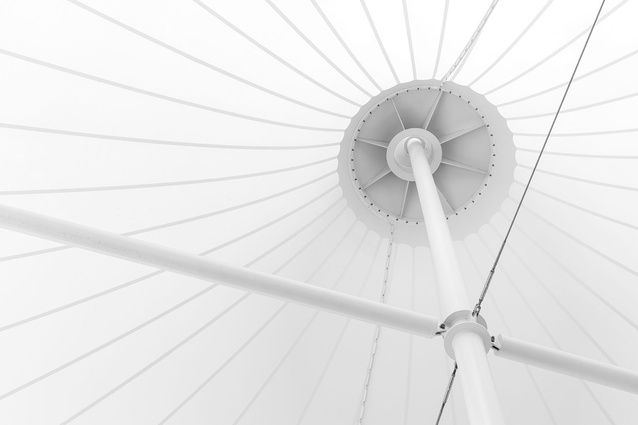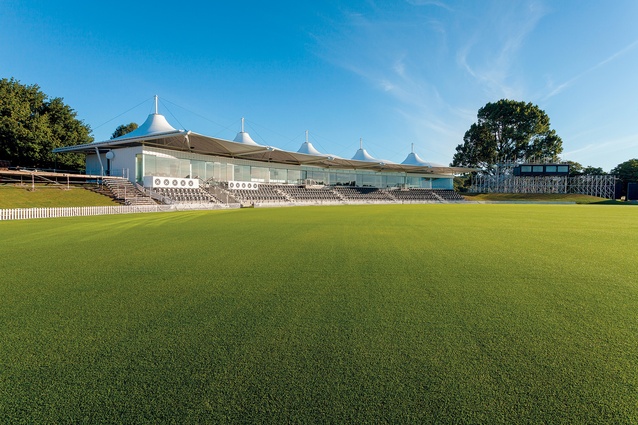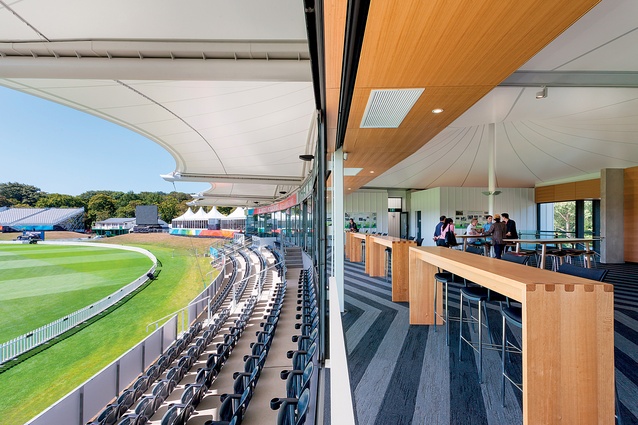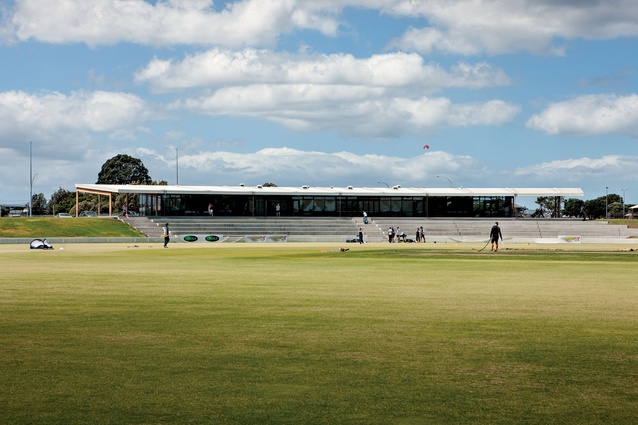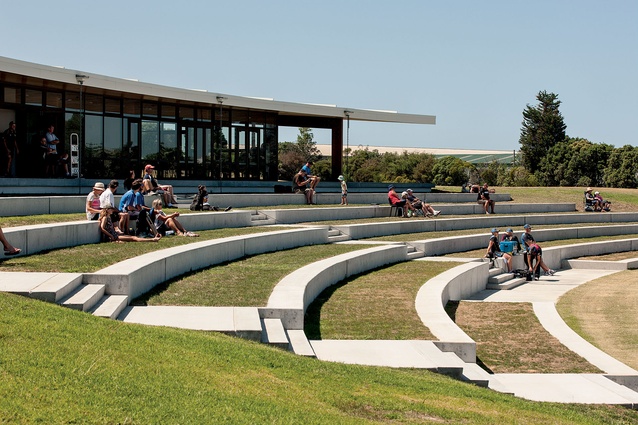Back to the pavilion
Whereas the religions of Rugby and Football demand stadiums, the polite sport of cricket has a history of making do with relatively modest pavilions. Conveniently, the small size of these structures matches the scale of our cities and also enables a connection to other bastions of false modesty: the New Zealand traditions of sheds and baches.
New cricket pavilions at grounds in Christchurch (Athfield Architects) and Tauranga (Jasmax) follow international precedents but also sit firmly with the country’s tendencies towards function and appropriateness of scale. They also follow changing habits towards smaller, specialised sportsgrounds.
Before the inaugural game at the new Hagley Oval in 2014, Christchurch had gone 11 long years without a test match. Initially, this was a result of the growing influence of Super Rugby and the associated restrictions on test cricket at Jade Stadium and, later, the earthquakes. More broadly, the Hagley Park development signals a shift away from large multi-use stadiums that are often too big, too small or the non-ideal shape for each sport towards smaller and more-appropriate surfaces and more- intimate audiences.
Tauranga continues to grow and expand, and is now New Zealand’s sixth-biggest city and it was only on the completion of the new Bay of Plenty (BoP) ground in 2013 that it hosted its first international cricket match.
Pavilions perform a number of important functions and these vary significantly depending on the size and scale of the game. Both projects have changing rooms, public toilets, function facilities, space for commentators, match officials, referees and scorers, and team rooms.
The pavilions had to balance tensions between small budgets and only occasional international use with the demands of the International Cricket Council (ICC) regarding venues when they are used for international games. In both cases, this is managed through careful planning, flexible space and a commitment to making sure the buildings performed well, not just during the rare internationals but also for the other 99 per cent of their usage.
There is a surprising humility to both these buildings, albeit expressed in different ways. They are primarily community assets that have the inbuilt potential to be used for occasional high-demand events.
The Bay Oval pavilion achieves much of this because offices for the BoP Cricket Association are designed so that they can be packed away easily and transformed into rooms during game-time. This ensures a range of spatial options to meet the demands of local, national and international games.
The pavilion uses a regular repeating structure with a material palette of cast concrete, glulam timber and glazing to keep the building cost relatively low. The building sits largely on top of a grass mound and a long, low, slow-curving roof extrudes a simple cross-section. The precedent is the simple and stylised Martyrs Pavilion in Oxford by John Pawson. This carefully crafted symmetrical building situates a timber and glazed box between two dominant white horizontal lines. While the original wouldn’t look out of place in a Wes Anderson film, the new building probably would.
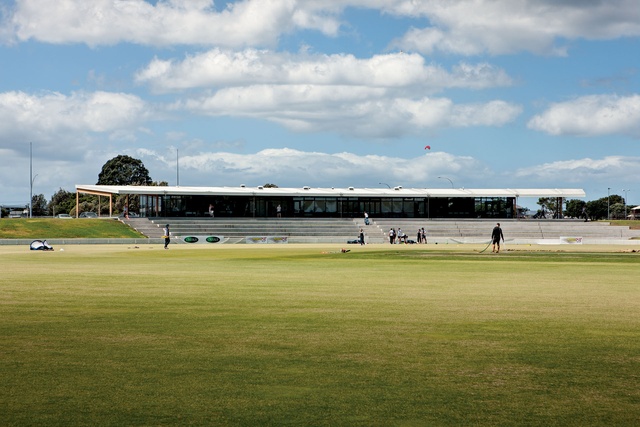
The Athfield-designed pavilion sits, with much controversy, in Hagley Park. The ins and outs of this process require their own unpacking but my hope is that the public’s concerns about this building setting a dangerous precedent for ministerial interventions into planning processes and the erosion of public space in Hagley Park managed both not to damage this project and to make any future proposals unlikely.
I went to the one-day game held there in the middle of January, between Sri Lanka and New Zealand, and the ground looked magnificent. The public pressure, no doubt, created lots of work behind the scenes but it’s hard to see how it affected the quality of the ground, and it may have improved it even by keeping the scale of the interventions so modest. Certainly, there is nothing like a deadline, and the Government’s slightly panicked 100-day plan in 2012 and the looming potential of the ICC Cricket World Cup 2015 worked in favour of pushing this project through. I can’t help but think that all the park needs to complete its Englishness is a large sign matching the message from God at the end of the Douglas Adams’ book So Long, and Thanks for All the Fish that says, “We apologise for the inconvenience”.
While it’s the first of the so-called anchor projects to be finished, it differs in its modest goals and aims and, I think, for this reason, has a contextual sensitivity not shared by some of the other visions for the city, such as the stadium or convention centre.
The Hagley Oval Pavilion follows a tradition of tension membrane structures established at Lords in London and in Adelaide. The building shifts its materiality vertically: a concrete base and a timber board-and-batten building, with a floating steel and membrane roof above.
The pavilions succeed in different ways. They both provide well-thought-out arrangements of spaces to what are quite complex demands that betray the simplicity of the materials and forms. The low roofline and extensive glazing on the BoP pavilion give it the unfortunate appearance of being an overblown domestic residence or a light commercial building, which is a shame as the detailing and material care on the smaller scale is remarkable for such a small budget. In contrast, the formal arrangement of the Hagley Pavilion in the context of the park is highly effective. It doesn’t try to hide its size but also doesn’t overstate its position. The tensile roof gives the building a dynamic of lightness and weight that appropriately matches the contrasts of speed/slowness and aggression/care that the game of cricket provides. These are both solid projects coming from two of New Zealand’s strongest architecture firms.
It is less of a direct criticism of the clients or architects and more a critical observation to conclude that, despite the skill and care with which both these projects are executed, there is a disappointing lack of attention to ecological infrastructure. These types of humble, yet generous, building provide the perfect opportunity not only for sporting and social communities but also for the ecological health and commons of our cities. I look forward to the day when different ecological systems are considered part of the ‘publics’ that these projects support.

